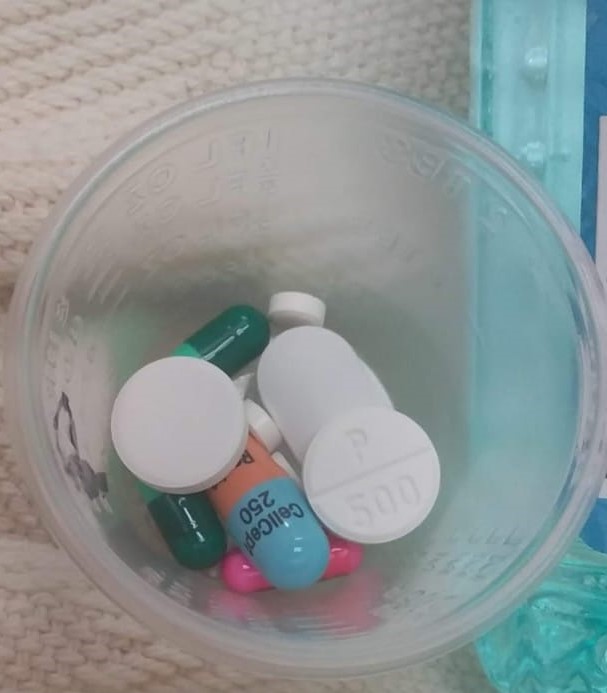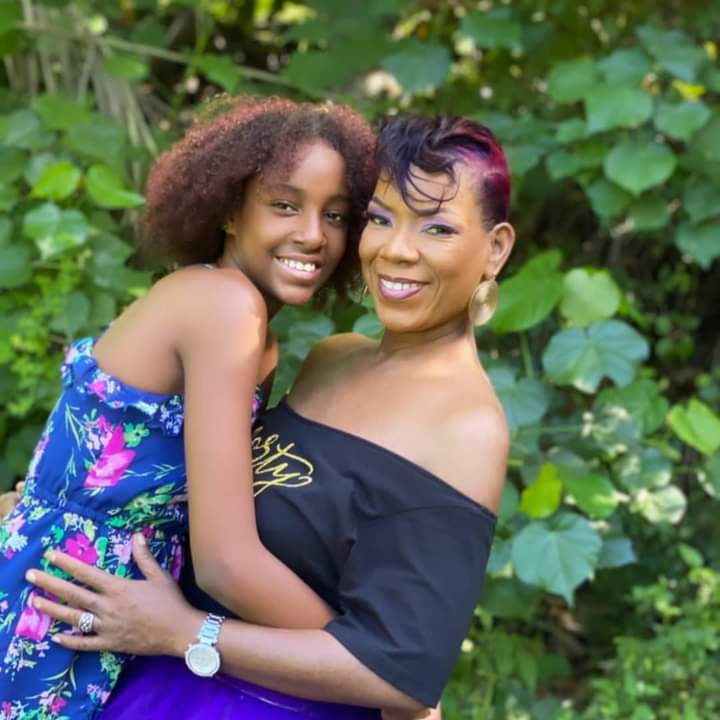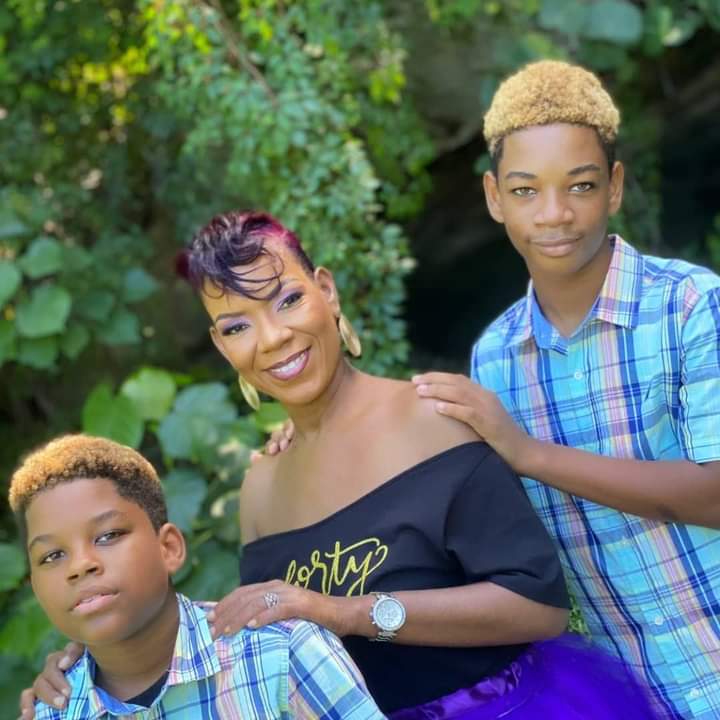Living with Lupus: How One ‘Diva’ is Rediscovering Herself

As the superstition goes: itchy palms mean money is coming. But for Torkel Smith, who was recently diagnosed with lupus, this notion would soon become more of a medical issue than a monetary blessing.
Lupus is an autoimmune disease (when your body’s immune system mistakenly attacks healthy tissues and organs) that results in inflammation causing joint pain, fever, skin rashes and organ damage (brain, heart, kidneys, lungs).
Smith explained that one day, not long after her 39th birthday in October 2020, her palms started to itch and, eventually, peel.
“I thought relaxing my hair without gloves was what caused it,” she said.
“Lotion wasn’t doing anything; it was like washing my hands with water. Vaseline wasn’t something that I had on hand, so I just got thicker lotions, but to no avail.”
With the symptoms coming and going, it wasn’t until Smith noticed three bruise-like marks on her thigh, that she became a bit more concerned.
“That shocked me because I don’t have spots. I’m one that prides myself on having smooth legs, so that was another sign that prompted me to go to the doctor because I didn’t remember bumping my leg against anything, so where would these marks have come from?”
She added, “I always have cocoa butter to get rid of any little dot I see. But three weeks turned into four weeks and none of the marks were disappearing. Then, they started appearing on my hands and that’s when I went to a doctor.”
MISDIAGNOSES
Upon visiting a local clinic, Smith’s immediate diagnosis was an allergic reaction, for which she was prescribed antifungal shampoos and creams, which only further irritated her skin. But as more bruises started to show up, she booked a visit to her family doctor, who also prescribed medication for an allergic reaction.
“My skin cleared up within two to three days, as if nothing happened. But after about two weeks or so, when the medication was gone, it was right back to where it started. Bloodwork was $300-$500 a pop. When I should’ve been preparing for back-to-school shopping for my children, all that money was going towards doctor visits and medication.”
After her third visit to her family doctor, he realized that what Smith was experiencing could not be an allergic reaction and referred her to a dermatologist to have a biopsy done.
“That was scary because I had to get a punch biopsy (where a circular blade is used to remove deeper layers of the skin and tissue) and I’m afraid of needles, so that hurt for days afterward,” Smith explained.
However, it wasn’t until her results came back that Smith was in for a shock.
“My results were extremely low iron, to the point where the dermatologist couldn’t figure out how I was even walking,” she explained. “I think my blood count was below six, and she wanted me to get a transfusion.”
During a complete blood count, the normal range for haemoglobin in males ages 15 and up is 13.0-17.0 grams per decilitre (g/dL) and 11.5-15.5 g/dL in females of the same ages - Smith tested below half on both ends of the scale.
“I had high cholesterol (I love seafood),” she added. “But the doctor’s diagnosis was extreme eczema.”

A high school business studies teacher, Smith was not looking forward to living with eczema. She knew a few students with it and heard that there is no cure, and that people who have it are stuck with unsightly marks. Yet, this would be the least of her troubles.
“She gave me meds but it was rough to stick to that routine because I’m not one to even take pills for a headache. Then, I said, you know what? I have a moringa tree in my yard, access to neem and access to aloe, so I’m going to go all natural.”
Smith went cold turkey, no longer taking the prescribed medications, which sent her off the deep end.
“I didn’t notice right away, but my face started to swell, my eyes started to puff up, my ears started to clog; my feet and hands started to swell,” she explained. “It got to the point where the clinic made me an appointment with a dermatologist at the (Princess Margaret) hospital, which ended up saving my life.”
A CORRECT DIAGNOSIS
On the morning of Tuesday, December 29, 2020, Smith woke up unable to recognize herself.
“Thank God my one good husband had already gone to work and did not see me because I don’t think he was going to return,” she noted, jokingly.
“When I went to my appointment at Princess Margaret Hospital’s (PMH) skin clinic, I saw my dermatologist and she didn’t even recognize me; she recognized my voice,” Smith added. “When I told her who I was, she broke down in tears. It completely disfigured me.”
Smith also met with a rheumatologist, as she was experiencing painful swelling in her joints (rheumatoid arthritis), a common side effect, and cites that doctor as a "godsend" for having her admitted right away.
“It was so funny because they were running the tests and looking at the computer, then at me, then back at the computer; it was obvious that they were trying to figure out how I was still alive,” she noted. “Then, they said you know what; let’s test for lupus, but they still didn’t want to call it by its name.”
Smith remembers feeling like a pin cushion.
“I felt like they tested me the whole day, literally from head to toe, on Tuesday, from 12:30 p.m., until 3 a.m. Thursday when I got admitted to the ward. Then, they realized lupus was the closest diagnosis because they kept saying ‘autoimmune disease’.”
While the exact cause of lupus is not known, factors such as hormonal changes (increase in estrogen) in females during child-bearing age (15-45); environmental changes (such as the amount of sunlight to which you are exposed, stress, or even smoking); as well as a family history, are all possible causes.
However, Smith is not certain of what would've predisposed her to the disease, as all three of her births were without complication, there were no sudden environmental changes, and there is no family history of lupus, although her mother did pass away at the age of 48 from bone marrow cancer.
In fact, she was excited to learn of her diagnosis, as it meant that she would not share the same fate as her mom.
“My faith in our healthcare system was restored,” she said. “My dermatologist ensured that I was on a private ward. I was there for almost three weeks. My doctors were testing out different meds to see what was working and what made me sick because I started to swell up again and fluid had built up in my lungs.”
Smith acknowledged God for keeping her through this ordeal.
“It can only be God because the things they were telling me, I should’ve been dead,” she noted. “I should’ve been on dialysis because I’m not a water drinker. I could go weeks without drinking water. When I came there, my organs were already shutting down. They were like, ‘You have to be blessed because we’re not seeing where you’re on or need to go on dialysis. The tests are showing us one thing but you’re showing us another.’”
In fact, she had already lost a lot of weight, going from 140lbs. to 100lbs. during her three-week hospital stay.
A RETURN TO NORMAL LIFE
Smith noted that when she was discharged, she had someone pray for her because her doctors hadn’t expected her to make it as her tests had, in fact, shown that her kidneys were shutting down, that her heart was racing and that she was experiencing a high fever – all common symptoms of lupus.
“I didn’t tell anyone about that because I was in denial, but I think hubby (her husband Jamaal Smith) picked up on it because he kept asking me for updates,” she said.
It didn’t help that she was hospitalized during the height of the COVID-19 pandemic when visitors, no matter how close, were not allowed in.
Nevertheless, in mid-January 2021, after weeks of lying in a bed and being assisted and wheeled everywhere, Smith was back home.
“I’m an active person, so it was a hell of a transition. Obviously, I couldn’t move around much, dealing with symptoms, and my rheumatoid arthritis would flare up, every now and then,” she explained. “I could hardly hold a plate. I would be eating, and the fork would literally just drop out my hand. I would be driving, and the wheel would just go; and I’m only discovering this in the midst of the activity.”

The mother of three had to learn how to walk again, how to feed herself; how to bathe.
“P’lar (her then-11-year-old daughter) used to feed me. She was my private nurse. She needs to intern at the hospital because her bedside manner, her treatment towards me was amazing. She was holding my hair while I vomited after taking my meds. She bathed me, dressed me – my 11-year-old daughter.”
As a mom, Smith did not want her illness to disrupt her children’s lives.
“Coming back home was a challenge because it kind of forced me to push through it (recovery) because I don’t want them to miss out just because I’m sick,” she shared. “When everybody’s like, oh, relax yourself, I’m like my kids still have things to do.”
In fact, upon her return, Smith noticed a decline in grades from all three kids, who she said are honour roll students.
“I think the stress of them knowing I was in the hospital and sick caused them to fall behind in school a bit, especially my daughter, since she was helping me,” she explained.
However, Smith and her husband almost immediately decided on home-schooling their children, via an online school, which Smith said was the best decision ever.
“If I knew about that when they started school, not to knock schools here, I would’ve never sent them to regular school,” said Smith. “My kids are more involved. One morning, I woke up at 6:30, my daughter and baby boy (who would sometimes refuse to attend virtual classes) were in school. He now goes to class on his own, and they’re taking more advanced classes.”

Smith also shared that her children have become more caring and sensitive; that the money she has saved on tuition can now go back into swimming lessons, which is a win-win for her and the children, as she gets to spend time with them; and that she and husband Jamaal are planning a new business venture.
“I still have my days,” she explained. “Some days, I just want to throw on my makeup and a nice outfit because I don’t want to see this butterfly rash (malar rash – a flat or raised red or purplish rash that forms on the cheeks and nose bridge in the shape of a butterfly, commonly associated with lupus). But my husband would walk up behind me, rub my shoulders, give me a little peck on the cheek and tell me that I’m still his beauty.”

In two months, Smith and Jamaal will celebrate 17 years of marriage. While this is a welcome occasion, Smith's health is still her husband's top priority.
“When I found out my wife had lupus, I was scared not knowing what it was and what the outcome would be,” said Jamaal. “I HATE lupus because of what it did to my wife. It has her up all night in pain and she can’t get a good night’s sleep, plus she has to take loads of medicine. I wish and pray that I could take lupus from her. So, until my wish comes true, and my prayer answered, I will do whatever I can for us to fight and beat lupus, and we WILL beat lupus.”
LIVING WITH LUPUS
Still a young woman, and wife, Smith has always been keen on being well put together. On any occasion, she is sure to have a trendy hairdo, sometimes with a splash of colour; skinny, high heels with slim, smooth legs to match; accessories; and a face that’s always picture-perfect.
But, although this “diva” (as Smith would call it) disposition has worked in her favour all her life, she now sees it as a leading factor in her diagnosis.
“This is a little philosophical, but I think lupus came to me to slow me down to appreciate things, to humble me, because I think I was on a path of being untouchable,” she explained. “Things were going good. I knew I was attractive. I was smart, I had a good job. I was living. That right there (the diagnosis) was a wake-up call reminding me that, ultimately, I'm not in charge. So, a lot of things I didn’t think twice about now are a whole decision-making session. I have to think about what I eat. I cut out dairy as much as I could.”
Although scientists claim that there is no cure for lupus, Smith begs to differ.
“I believe there’s a cure for everything,” she said.
“Of course, the doctors were like diet doesn’t play a factor, but I find that in my research, and in my experience, it does. I decided to just go on steroids, specifically prednisone 20mg, and increase my calcium intake (as steroids break down bones) and multivitamins with omega-3 and iron, and I almost feel like my old self."
Smith credits this formula as her saving grace for keeping her symptoms such as joint pain; rashes; fever; dry eyes; sensitivity to sunlight; kidney and heart problems; anaemia; swelling of her face, legs and feet; dry, peeling skin from head to toe; white, numb fingers and toes (due to Raynaud's syndrome); a loss of appetite; hair loss and fatigue, at bay.
Now, she only eats chicken and fish, as dairy products, gluten and red meat exacerbate her inflammation.
"I'm considering becoming a nutritionist and pushing that in our business - healthy eating, healthy activities. With my husband being a chef, I think we could really do well," she said.
Smith, who has been both a primary and high school teacher for more than 13 years, also has plans to open a school, where she can schedule her own hours, as she understands the need to have different avenues with the rising number of COVID-19 cases amongst students.
As for how her diagnosis has affected her emotionally, Smith never asked "why me?"
"Surprisingly, I embraced it to the point where I needed to slow down," she said.
"But before I was diagnosed, I did not want to find out what was wrong with me because finding out meant that I would have started to deteriorate from stressing out about it, knowing, subconsciously, that I was counting down my days, thinking about my mom."
OUTLOOK FOR LUPUS IN THE BAHAMAS
While Smith, who describes herself as "an open book", is fortunate to have found a regimen that works for her, she is aware that no two cases are the same.
"I joined an international Facebook support group for people living with lupus, which has been extremely helpful because they share EVERYTHING, from lab results to pictures and medications they're taking," she said.
"Funny story. One of the members shared that she was experiencing facial itching and that nothing she was using was working. Somehow, she tried Vagisil, of all the products, and guess what? It worked! It's nice to have support from people who are dealing with the same thing as me."
Smith was also recently added by a friend and board member to the Whatsapp group chat for Lupus 242, a non-profit providing support and information for individuals in The Bahamas living with lupus. It was this same friend who asked Smith, years ago, if she had ever gotten tested for lupus.
As for what her hopes are for the lupus community in The Bahamas, Smith said it starts with raising awareness.
"Speak up. Share your experience, so that it can help someone else living with the disease. Sometimes, I find that Bahamians can be too proud and even ashamed of what they're going through, which is to their detriment. You can't get help if you don't make others aware of what you're going through."
Smith also acknowledged the exorbitant costs associated with treatment.
"I would like to see the government show a little more initiative, and less red tape, even with the National Health Insurance drug plan. I have regular checkups for my eyesight and bone density. Without insurance, which we gave up, meds cost about $800 monthly. At PMH's pharmacy, it'll run me into about $450. Routine bloodwork is now about $200 monthly. I find that everything is [geared towards] cancer, but lupus isn’t far from it, so I'm just hoping that they open up more doors, so we can get the help and treatment we need."
Nonetheless, Smith does credit doctors in The Bahamas with being better than elsewhere.
"Based on my research and my connections in the international lupus Facebook group, I find that I'm better off seeking treatment here. I was considering going out of the country for treatment, but I decided against that based on the experiences members shared in the group."

Smith isn't letting lupus hold her back.
Today, she is still as busy as ever with a plate that many who have no health ailment would find to be too full, serving as a volunteer timekeeper at her kids' sometimes 5 a.m. swim meets, K-Kids (primary school division of Kiwanis) volunteer, teacher, tutor, book club leader, carpool driver, sister, friend, diva extraordinaire, lupus advocate and so much more.
As she honours World Lupus Day, which was celebrated on Tuesday, May 10, Smith is filled with gratitude.
"This World Lupus Day, I will be celebrating life and the fact that I have a handle on the disease. I'm going to continue with my diet and promote the plant-based diet because I think that it helps. I saw a difference within three weeks, so it’s possible. You just have to be really strict with it."
She added, "I'm also very grateful to God and to my family, close friends and work family for their support. I couldn't have gotten through any of this without them, especially my work family who raised funds. I can't thank them enough."
"To the average Bahamian, do your research," she said. "Don't go by what people say. Don’t think that a person is just being lazy or difficult. Become aware. As for myself, I'm not going to let lupus hold me down. I'm still alive!"
*
You can honour lupus by wearing purple every Friday in May and spread awareness using the hashtags #WorldLupusDay and #MakeLupusVisible
To become more involved in the fight against lupus in The Bahamas, click here.
If you suspect that you or a loved one may be predisposed to, or currently experiencing symptoms of, lupus, or if you want to learn more about the condition, click here.
